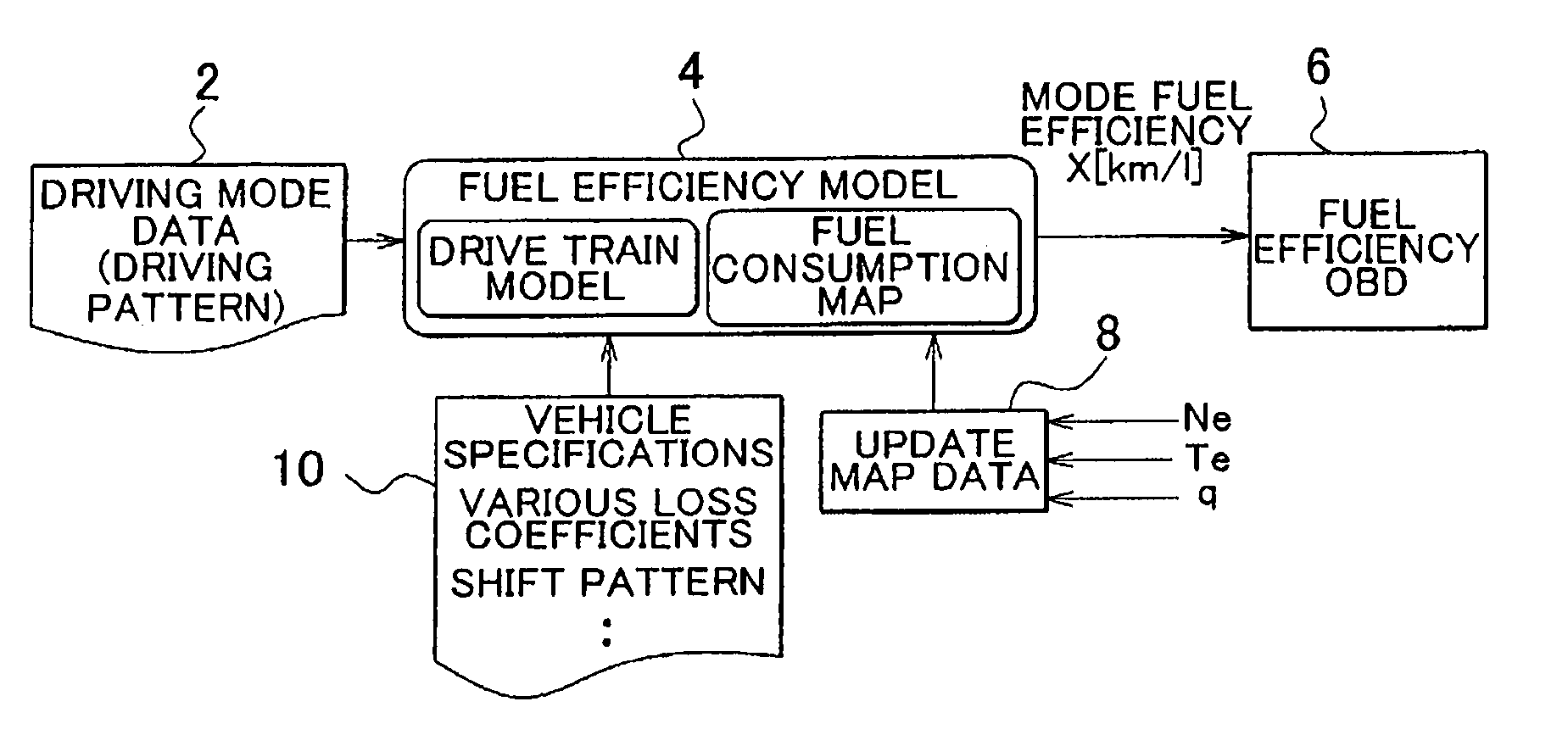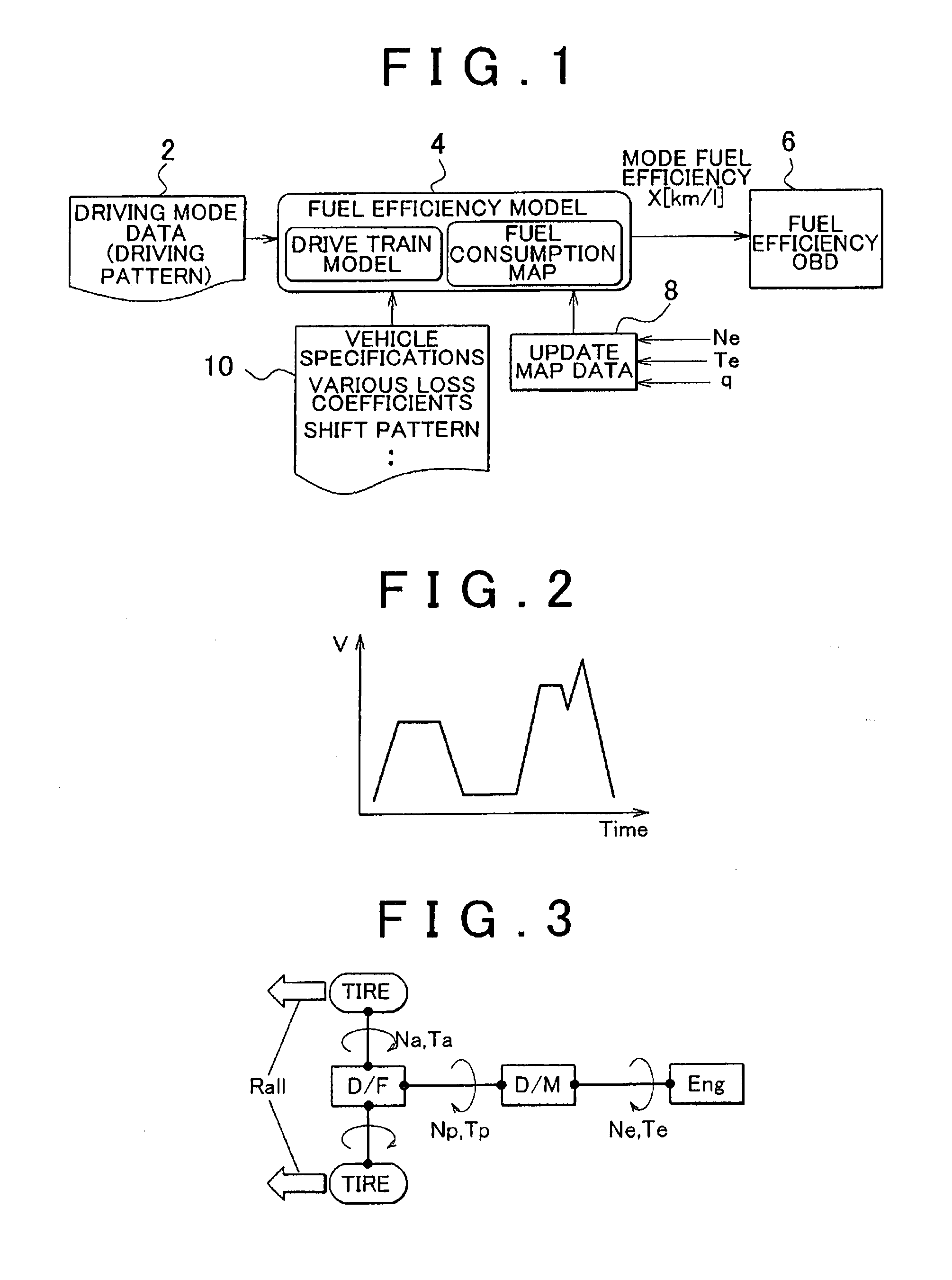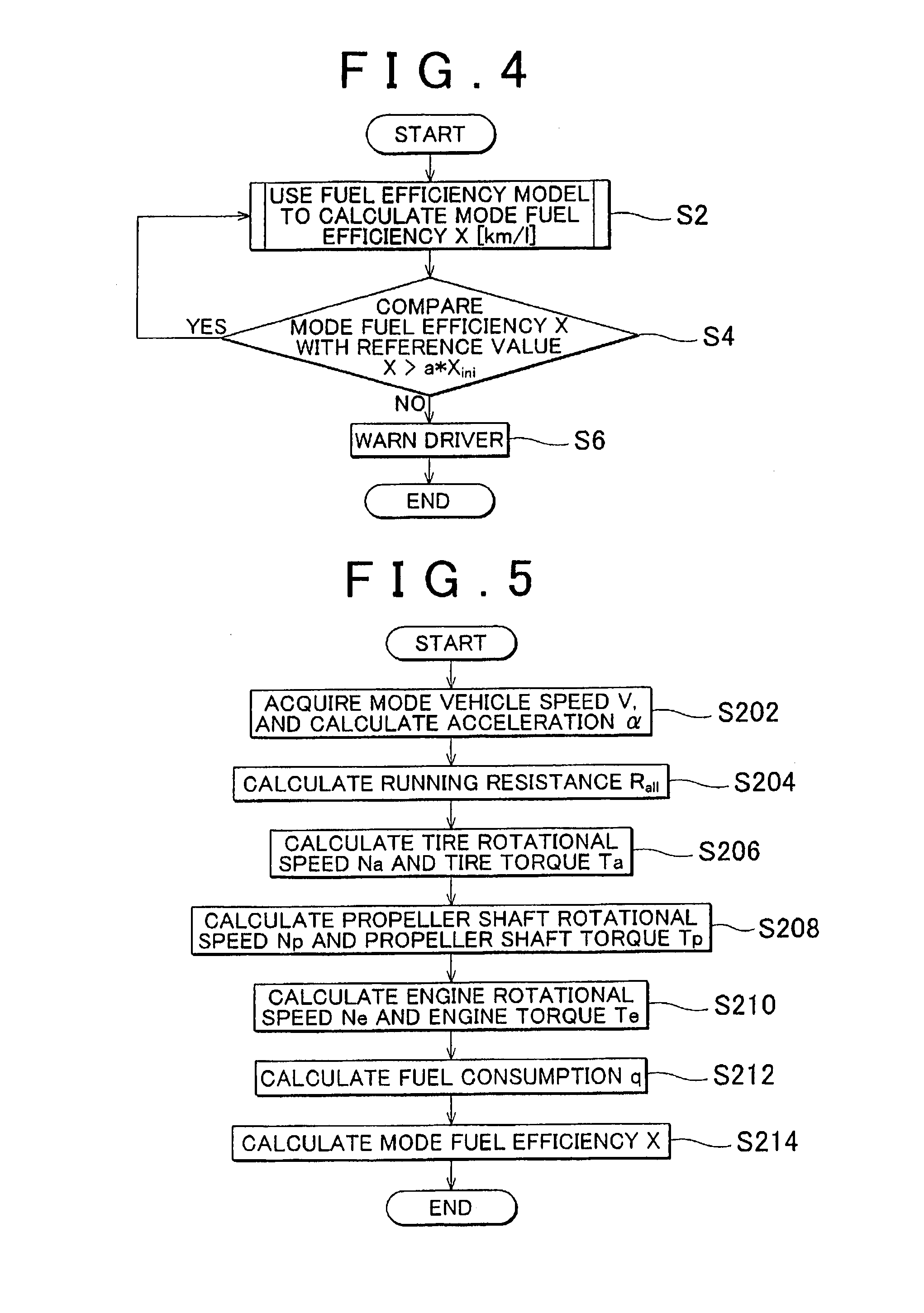Diagnostic system and diagnostic method for vehicle
a diagnostic system and vehicle technology, applied in the direction of braking system, vehicle position/course/altitude control, instruments, etc., can solve the problems of not improving fuel efficiency so much, and it is impossible to determine whether the effect of deterioration of fuel efficiency
- Summary
- Abstract
- Description
- Claims
- Application Information
AI Technical Summary
Benefits of technology
Problems solved by technology
Method used
Image
Examples
first embodiment
[0049]A vehicle or a diagnostic target in the first embodiment is a vehicle that is driven by an internal combustion engine (hereinafter, simply referred to as engine). The vehicle includes a manual transmission or an electromagnetic clutch-type automatic transmission in a drive train. The type of the engine is not limited. A diagnostic system according to the present embodiment is implemented as one of functions of a controller provided for the vehicle. FIG. 1 shows a block diagram of the configuration of the case where the controller of the vehicle functions as the diagnostic system. The configuration shown in FIG. 1 is virtually implemented in such a manner that a CPU of the controller operates in accordance with a program stored in a memory of the controller.
[0050]As shown in FIG. 1, the diagnostic system is formed of five elements 2, 4, 6, 8 and 10. One of the elements that constitute the diagnostic system is a driving mode data storage unit 2 that stores diagnostic driving mod...
first alternative embodiment
[0071]For example, the aspect of the invention may be applied to a vehicle equipped with a torque converter automatic transmission. In this case, it is only necessary that the process of step S210 in the flowchart shown in FIG. 5 is replaced with the processes of steps S220, S222, S224 and S226 in the flowchart shown in FIG. 6.
[0072]The flowchart of FIG. 6 will be described. In step S220, a torque converter rotational speed Nc and a torque converter torque Tc are calculated on the basis of the propeller shaft rotational speed Np and the propeller shaft torque Tp. A torque converter model that models the transmission characteristic of a torque converter using a physical equation, an empirical formula or a map for the above calculation. In step S222, an engine rotational speed Ne and an engine torque Te are calculated from the torque converter rotational speed Nc and the torque converter torque Tc.
[0073]The gear ratio iM of the transmission is required for calculating the torque conve...
second embodiment
[0075]A vehicle or a diagnostic target in the second embodiment is a vehicle that is driven by an internal combustion engine (hereinafter, simply referred to as engine). The engine equipped for the vehicle is a spark ignition engine of which an air-fuel ratio is controlled to a stoichiometric air-fuel ratio. The other engine specifications are not limited. The diagnostic system according to the second embodiment is implemented as one of functions of a controller provided for the vehicle. FIG. 7 shows a block diagram of the configuration of the case where the controller of the vehicle functions as the diagnostic system. The configuration shown in FIG. 7 is virtually implemented in such a manner that a CPU of the controller operates in accordance with a program stored in a memory of the controller. Hereinafter, like reference numerals denote similar components to those of the first embodiment, and the description that overlaps the first embodiment is omitted.
[0076]FIG. 8 is a conceptu...
PUM
 Login to View More
Login to View More Abstract
Description
Claims
Application Information
 Login to View More
Login to View More - R&D
- Intellectual Property
- Life Sciences
- Materials
- Tech Scout
- Unparalleled Data Quality
- Higher Quality Content
- 60% Fewer Hallucinations
Browse by: Latest US Patents, China's latest patents, Technical Efficacy Thesaurus, Application Domain, Technology Topic, Popular Technical Reports.
© 2025 PatSnap. All rights reserved.Legal|Privacy policy|Modern Slavery Act Transparency Statement|Sitemap|About US| Contact US: help@patsnap.com



